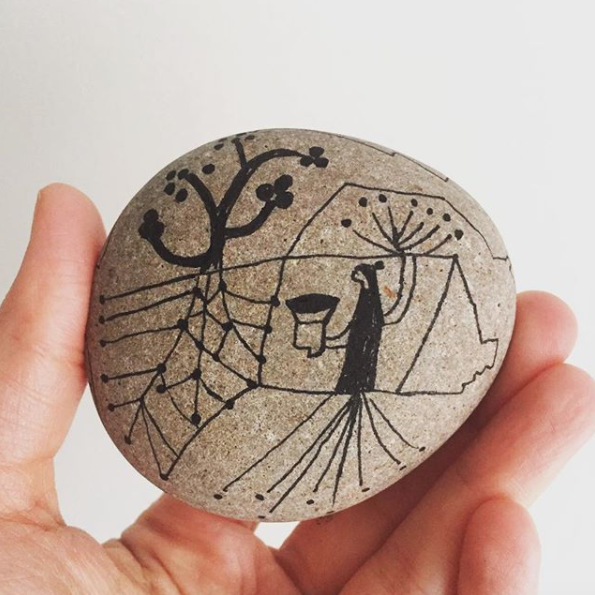Weaving as a Process of Involvement
Cecilia André is an artist with an expansive and prolific experience. She is not only a painter, but also a weaver on canvas. In recent years, she has been exploring the decomposing process of her work unit, the canvas, and reconstructing the materiality of paintings. This process reflects on what makes her work visual as well as tactile through colour, texture, and pattern.
In the late 1990’s, works like “Dream Collage” (1998) and “Spiral Flowers” (1995) already indicated a spatial fragmentation, but still a pictorial one on a flat surface. It would be only in the early 2010’s that Cecilia did away with the material unity by cutting the fabric of her work into strips and later stitching the pieces together as in “Flag” (2014) and “One, Two, Three” (2014) completely reformulating her working process. The sole piece left was the framework, which became her basic grid and emerged as the space of a new relationship between materials and their effects.
Composed intuitively, Cecilia’s works are elaborated step by step as she investigates how the materials are combined and which effects are generated by their overlap on the canvas. The choice of materials is then crucial for this new approach that mixes painting, sculpture, sewing and weaving. While working mostly with fabric, two aspects of this new process deserves attention. First, her primary source of materials comes from her own private domain: bed sheets, clothes, table cloths, among others. In “Gone” (2016), blue bedding linens revolve around the wood stretchers, while in “Shadows” (2016) a tattered embroidered cloth is tied to the exposed frame. By deconstructing domesticities and exhibiting private memories, Cecilia presents personal stories that go beyond the individual and reach collective memories. As we examine her work up close, we recognize a kind of fabric, sewing and needlework that references a time when women used to handcraft them all. Second, she establishes participatory practices when asking friends and relatives for donations of personal fabric–clothes or others–and also by inviting other artists to work with her. In “Small Garden” (2016), a light mesh linen piece serves as the support for a sort of constellation of bright, coloured lines, darned together with the artist Machiko Koike (the needle, a key part of the actions, was left intentionally in the center of the piece, functioning as a sign of a possible continuation–would you keep on sewing it?).
In the summer 2017, Cecilia participated in a residency in which she developed artistic interventions in an area of native Brazilian Atlantic Forest. This experience took her to work with neon, translucent materials, exploring effects of sunlight reflections and theories of colour as it filtered through her outdoor large-scale pieces. Back to her studio in Long Island City, she started experimenting with these materials on the frame, weaving fabric and plastic. Two key aspects of these new works are the emphasis on relationships among different materials and the visual and tactile effects their combinations create. Interestingly, they not only intensify the impact of light and colour, but also of texture. It is not by chance that she applies an even larger variety of textures in the current “Mai” (2017) and “Nile Flow” (2017).
Although much of Cecilia’s recent work has been made on canvas, her environmental experiments have impelled the comprehension of different materials’ translucency–not only of coloured plastics. Up to now, two extremes, her studio and a forest, have served as arenas for these investigations, but I imagine her new pieces will benefit from the occupation of unexpected parts of the city. I look forward to experience her forthcoming works in which the space, or the feeling of it, will be metaphorically woven.
* For more of the work of Cecilia André, visit www.ceciliaandre.com


